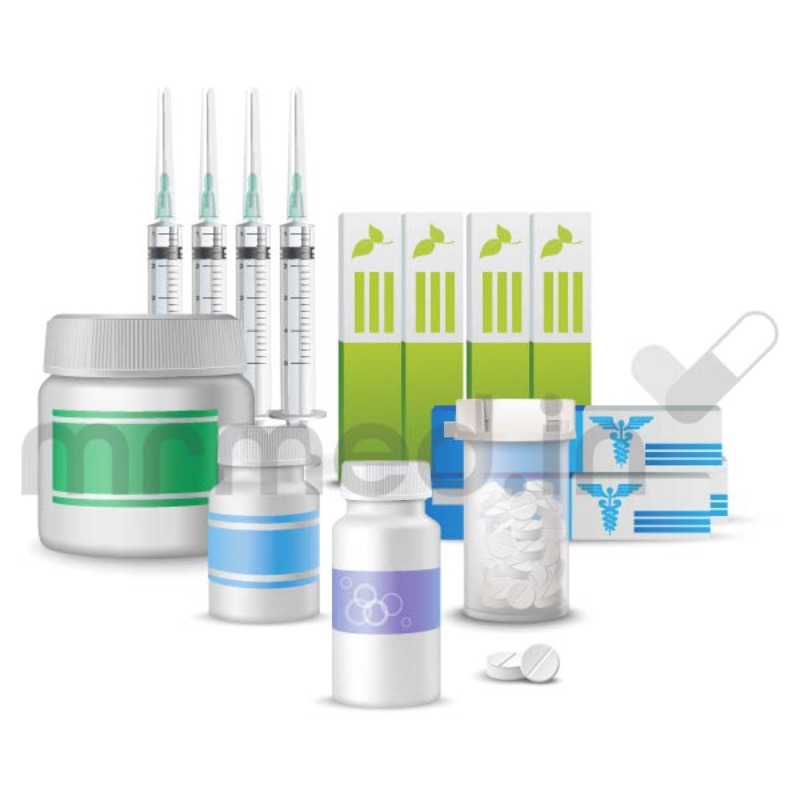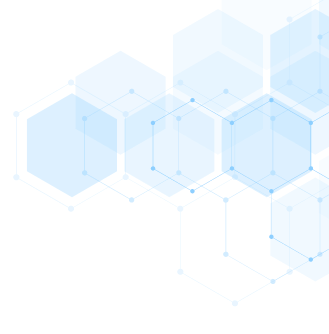DESCRIPTION
Epirubicin
Mechanism of Action
• Anthracycline derivative of doxorubicin.
• Intercalates into DNA, which results in inhibition of DNA synthesis
and function.
• Inhibits topoisomerase II by forming a cleavable complex with
topoisomerase II and DNA.
• Formation of cytotoxic oxygen free radicals, which can cause singleand
double-stranded DNA breaks.
Mechanism of Resistance
• Increased expression of the multidrug-resistant gene with enhanced
drug efflux. This results in decreased intracellular drug accumulation.
• Decreased expression of topoisomerase II.
• Mutation in topoisomerase II with decreased binding affinity to drug.
• Increased expression of glutathione and glutathione-associated
enzymes.
Absorption
Not orally bioavailable.
Distribution
Rapid and extensive distribution to formed blood elements and to body
tissues. Does not cross the blood-brain barrier. Epirubicin is extensively
bound (about 80%) to plasma proteins. Peak plasma levels are achieved
immediately.
Metabolism
Extensive metabolism by the liver microsomal P450 system. Both active
(epirubicinol) and inactive metabolites are formed. Elimination is mainly
through the hepatobiliary route. Renal clearance accounts for only 20% of
drug elimination. The half-life is approximately 30–38 hours for the parent
compound and 20–31 hours for the epirubicinol metabolite.
Indications
1. Breast cancer—FDA-approved as part of adjuvant therapy in women
with axillary node involvement following resection of primary breast
cancer.
2. Metastatic breast cancer.
3. Gastric cancer—Active in the treatment of metastatic disease as well
as early-stage disease.
Dosage Range
1. Usual dose is 100–120 mg/m2 IV every 3 weeks.
2. In heavily pretreated patients, consider starting at lower dose of
75–90 mg/m2 IV every 3 weeks.
3. Alternative schedule is 12–25 mg/m2 IV on a weekly basis.
Drug Interaction 1
Heparin—Epirubicin is incompatible with heparin as a precipitate
will€form.
Drug Interaction 2
5-FU, cyclophosphamide—Increased risk of myelosuppression when
epirubicin is used in combination with 5-FU and cyclophosphamide.
Drug Interaction 3
Cimetidine—Cimetidine decreases the AUC of epirubicin by 50% and
should be discontinued upon initiation of epirubicin therapy.
Special Considerations
1. Use with caution in patients with abnormal liver function. Dose
modification should be considered in patients with liver dysfunction.
2. Use with caution in patients with severe renal impairment. Dose
should be reduced by at least 50% when serum creatinine .5 mg/dL.
3. Use with caution in elderly patients as they are at increased risk for
developing toxicity.
4. Careful monitoring of drug administration is necessary to avoid
extravasation. If extravasation is suspected, stop infusion immediately,
withdraw fluid, elevate arm, and apply ice to site. In severe
cases, consult plastic surgeon.
5. Monitor cardiac function before (baseline) and periodically during
therapy with either MUGA radionuclide scan or echocardiogram
to assess LVEF. Risk of cardiotoxicity is higher in elderly patients
>70 years of age, in patients with prior history of hypertension or
pre-existing heart disease, in patients previously treated with
anthracyclines, or in patients with prior radiation therapy to the
chest. In patients with no prior history of anthracycline therapy,
cumulative doses of 900 mg/m2 are associated with increased risk
for cardiotoxicity.
6. Epirubicin may be administered on a weekly schedule to decrease
the risk of cardiotoxicity.
7. Monitor weekly CBC while on therapy.
8. Use with caution in patients previously treated with radiation therapy
as epirubicin may induce a radiation recall reaction.
9. Patients may experience red-orange discoloration of urine for
 24€hours after drug administration.
10. Pregnancy category D. Breastfeeding should be avoided.
Toxicity 1
Myelosuppression. Dose-limiting toxicity with leukopenia more common
than thrombocytopenia. Nadir typically occurs 8–14 days after treatment,
with recovery of counts by day 21. Risk of myelosuppression greater in
elderly patients and in those previously treated with chemotherapy and/or
radiation therapy.
Toxicity 2
Mild nausea and vomiting. Occur less frequently than with doxorubicin.
Toxicity 3
Mucositis and diarrhea. Dose-dependent, common, and generally mild.
Toxicity 4
Cardiotoxicity. Cardiac effects are similar to but less severe than those of
doxorubicin. Acute toxicity presents as rhythm or conduction disturbances,
chest pain, and myopericarditis syndrome that typically occurs within the
first 24–48 hours of drug
Chronic form of cardiotoxicity presents as a dilated cardiomyopathy with
congestive heart failure. Risk of congestive heart failure increases significantly
with cumulative doses >900 mg/m2. Continuous infusion and weekly
schedules are associated with decreased risk of cardiotoxicity. Dexrazoxane
may be helpful in preventing epirubicin-mediated cardiotoxicity.
Toxicity 5
Alopecia. Onset within 10 days of initiation of therapy and regrowth of
hair upon termination of treatment. Occurs much less commonly than with
doxorubicin, being observed in only 25%–50% of patients.
Toxicity 6
Potent vesicant. Extravasation can lead to tissue injury, inflammation, and
chemical thrombophlebitis at the site of injection.
Toxicity 7
Skin rash, flushing, hyperpigmentation of skin and nails, and photosensitivity.
Radiation recall skin reaction can occur at previous sites of
irradiation.
Toxicity 8
Red-orange discoloration of urine for 24 hours after drug administration.
SPECIFICATION


Login To Comment